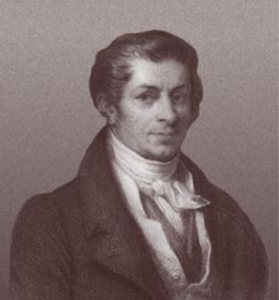
JB Say, 1767-1832
Jean-Baptiste Say was born 250 years ago, on January 5, 1767.
Say translated Adam Smith into French, wrote his own *Treatise on Political Economy* in 1803, and coined the term entrepreneur. He worked at a life insurance company in England and established his own cotton spinning mill in France, employing as many as 5,000. His “Law of Markets” – later known as Say’s Law – was a foundation of classical and neoclassical economics, a contravention of Malthusian pessimism, and later a chief target of Keynesian antagonists.
Peter Drucker began the first chapter of his book *Innovation and Entrepreneurship* by quoting Say.
“The entrepreneur,” said the French economist J.B. Say around 1800, “shifts economic resources out of an area of lower and into an area of higher productivity and greater yield.”
Drucker later continued:
“Joseph Schumpeter was the first major economist to go back to Say. In his classic *The Theory of Economic Dynamics,* published in 1911, Schumpeter broke with traditional economics – far more radically than John Maynard Keynes was to do twenty years later. He postulated the dynamic disequilibrium brought on by the innovating entrepreneur, rather than equilibrium and optimization, is the ‘norm’ of a healthy economy and the central reality for economic theory and economic practice.”
Here’s is Thomas Sowell’s book *Say’s Law.*
Here is Steven Kates’s book *Say’s Law and the Keynesian Revolution,* and a video of a Kates lecture on the topic.
Here’s John Maynard Keynes’s book *The General Theory,* which was in significant part an attempt to refute his own clever misstatement of Say’s Law.
Here is Mark Skousen: “Say’s Law is Back.”
And here is the @JBSay twitter account (me).
— Bret Swanson

